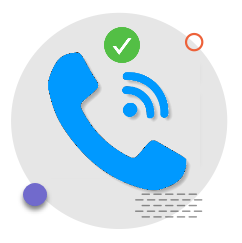
Everyone needs accessible digital financial information
Accessing your financial information has come a long way since the days of standing in line at the bank to check your spending power. While most consumers are able to check their bank statements, credit card spending, the interest on their investment accounts, and other financial information at the click of a button, assistive technology users often encounter barriers that make getting this vital information difficult or impossible.
Banks often present financial information in the form of a PDF for easy distribution and consistent formatting. While PDFs are convenient for many, they are often inaccessible to people with disabilities, many of whom use assistive technology. Failing to make all financial information, including PDF statements, accessible means excluding up to 25% of your customers and risking ADA compliance lawsuits.
3 reasons your financial organization needs to make its website and PDFs accessible
1. The ADA requires digital accessibility
The Department of Justice has made it clear that the ADA does apply to websites because they are considered places of public accommodation. The DoJ has referenced internationally accepted standards such as Web Content Accessibility Guidelines (WCAG) and federal agency standards such as Section 508. Section 508 also references WCAG. They have also started the process of developing federal standards for digital accessibility that will apply to not only government entities and those receiving federal funding, but all enterprise organizations as well.
WCAG states that all websites and apps and files available on or through those sources be perceivable, operable, understandable, and robust for people with a variety of disabilities. When web and app designers and content creators focus on those main pillars from the beginning, accessibility is included in the foundation of your content and its functionality. That includes PDFs.
The number of digital accessibility claims under the ADA against banking institutions has risen significantly over the past few years. Even industry giants like E*Trade and Morgan Stanley have both faced complaints regarding the accessibility of their websites and both have agreed to put a remediation plan in place to become accessible.
2. Accessible digital financial information sets you apart from other financial institutions
Nearly 80% of internet users bank online. Accessible digital financial information is necessary for assistive technology users. It can also make banking easier for anyone using their computer or smartphone. 58% of banks fail to meet their customers’ needs because they do not fulfill minimum digital accessibility requirements. By proactively addressing accessibility barriers on your website, you position yourself ahead of other financial institutions who fail to consider the needs of nearly 25% of the population who have disabilities.
3. It pays to address accessibility
Beyond the importance of enhancing your customers’ experience and being socially responsible, digital accessibility can be financially profitable. First, making your website accessible dramatically reduces the risk of ADA lawsuits. That alone can potentially save your company tens or hundreds of thousands of dollars. Making your apps and website accessible also opens up your services to the disabled population. Twenty-five percent of the American population has a disability and control a combined income of $872.7 billion in the US alone. When people with disabilities have a negative experience with a company, they often tell their friends and family, who may also choose another company to work with.
After creating a more accessible website, companies frequently experience an overall growth in revenue. Accessible websites aren’t just easier for those with disabilities to use, they’re often more streamlined and easier for all users.
Digital accessibility can also boost web traffic since most search engines read content in the same way screen reader software does: perceiving only digital text. PDFs usually appear to search engines (and assistive technology) as images, and tagging the document for accessibility makes it usable and searchable by both. When search engines capture that text, your SEO increases, and your website is more likely to show up in searches.
Ways the financial industry can address digital accessibility
1. Identify common barriers to accessible digital financial information
Nearly 70% of bank websites are unusable to some visitors they can only navigate them using a mouse. Often buttons are unlabeled so it is unclear what they were meant to do, and images lack alt text. Additionally, nearly all banks and financial entities use PDF formats for their monthly statements. Many of these are inaccessible due to errors in reading order. In many PDFs, the text is read out of order and tables do not read properly so customers cannot tell which numbers belong in which columns. It’s very difficult to parse information that is laid out in a table visually but presented to assistive technology users as a jumble of unrelated headings and numbers. This means assistive technology users do not have the same experience as everyone else. They cannot easily access their financial information.
2. Proactively address barriers to accessible digital financial information
The most efficient way to reach all of your customers and prevent both complaints and lawsuits is to make your website accessible from the beginning, or as soon as you become aware of any accessibility issues. Ideally, companies should consult an accessibility expert during the beginning design phase, because not every web designer is knowledgeable about accessibility. That way, webmasters don’t have to go back and try to mold formats into accessible code. Digital accessibility in banking requires web developers who understand assistive technology users and what their needs are. Ideally, companies should consult people with disabilities during the design phase to ensure usability for everyone.
In addition to the website itself, individual files available on or through the website, especially PDFs, need to be instantly accessible to all visitors and customers. This is especially important to financial institutions that use PDFs ubiquitously to convey information from statements, to annual reports, to informational documents.
The most efficient way to make sure all PDFs are accessible is to make all content creators responsible for ensuring the accessibility of their documents. Procuring and teaching all content creators to use a fast, easy PDF remediation tool like Equidox means all content is accessible before it ever hits the website. Equidox uses automation to take much of the manual tagging process out of PDF remediation. That decentralizes the task of accessibility and allows everyone to get involved in the process.
For mass-produced documents like individual customer financial statements, earnings reports, or other recurring PDFs, Equidox offers a custom-built, high-volume solution to instantly make documents accessible at the click of a button. This solution is built to suit your unique documents and can be deployed anywhere in your document production workflow, ensuring accessible PDFs whenever your customers need them.
3. Listen and respond to complaints
One of the biggest mistakes companies make when dealing with digital accessibility issues is ignoring feedback from, or passing them along to someone else without ensuring the concerns are addressed. Many times, those who aren’t able to access your website will take one of two actions. They may take their business to another company that has considered and prioritized their needs, or they may contact you to let you know that their needs aren’t being met by your website. If you take no action after becoming aware of their concerns, they may take their complaints to a lawyer and file a lawsuit against you for discrimination. Taking the time to respond to complaints and address them quickly and efficiently will keep customers happy and reduce your chancces of facing litigation.
Anticipate your customers’ needs
Your customers expect you to anticipate their needs. Earn the business of 25% of the population who experience disabilities and avoid costly ADA litigation by creating and maintaining an accessible website, and have a process in place to address issues as they arise. Samuel Proulx, who works for an accessibility testing platform and is blind, says, “Companies should focus on accessibility from the start. It is much easier to have accessible processes from the outset and not be doing all these high-cost remediations,” he said.
Nina Overdorff
Nina comes to Equidox with years of sales and marketing experience from a variety of industries and holds a BS in Language Arts Education. Nina has a passion for words, storytelling, and information, which she believes everyone should have access to regardless of ability. After spending time as a teacher with a blind student, she became much more aware of the limitations and abilities of web accessibility, and how essential it is to those experiencing disabilities. “Being able to access information equally ensures that everyone has an equal opportunity for education, employment, and success in life.”

Let’s talk!
Speak with an expert to learn how Equidox solutions make PDF accessibility easy.